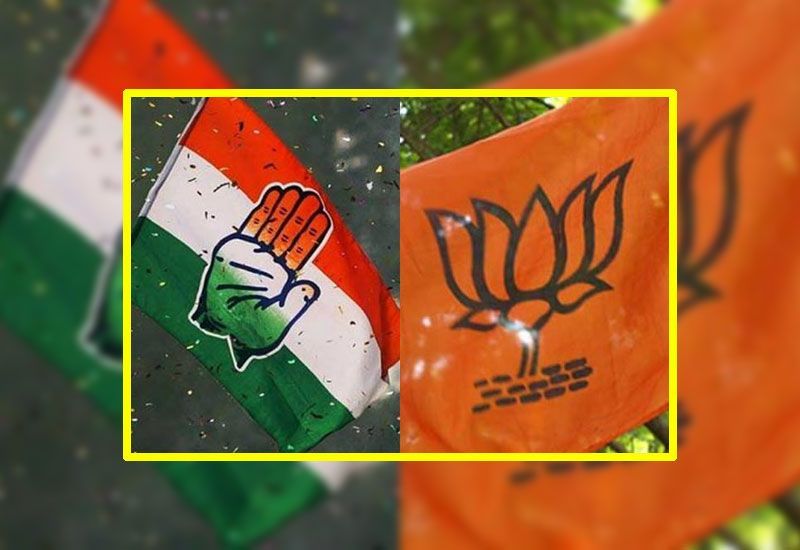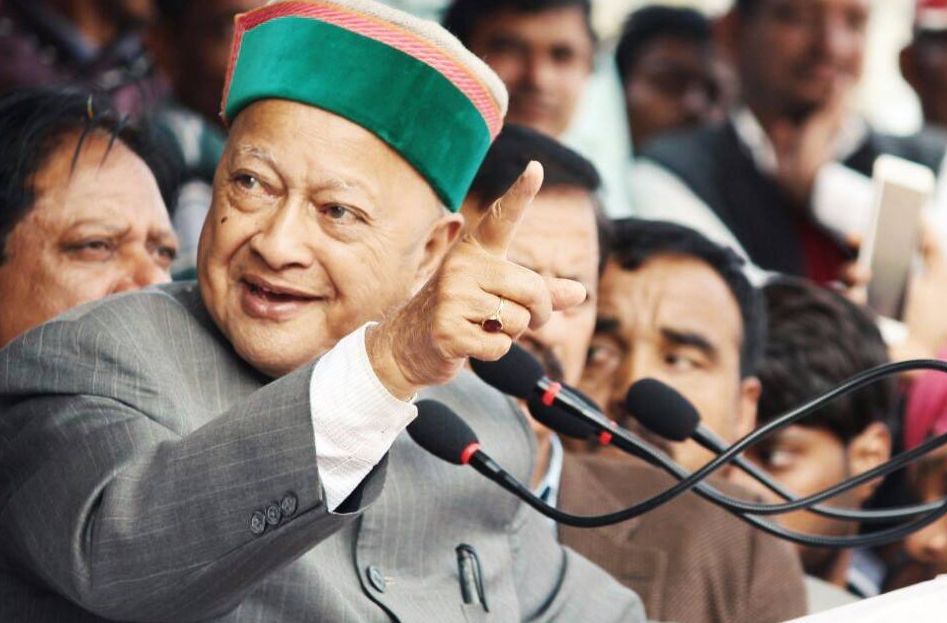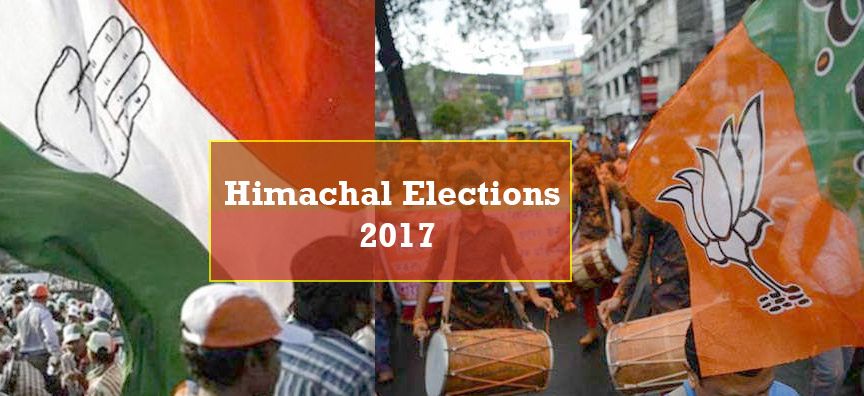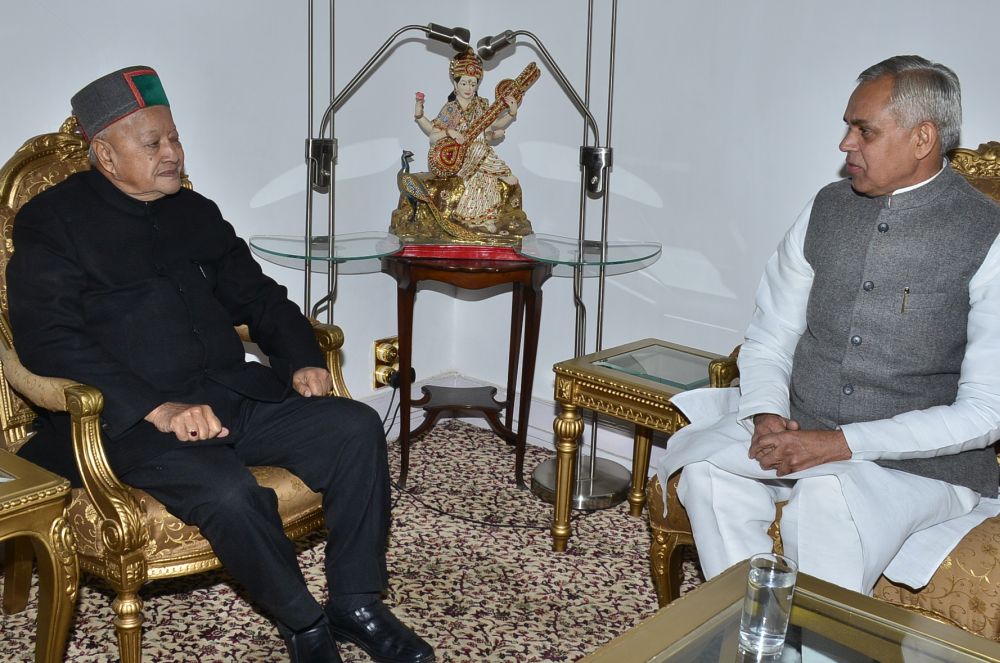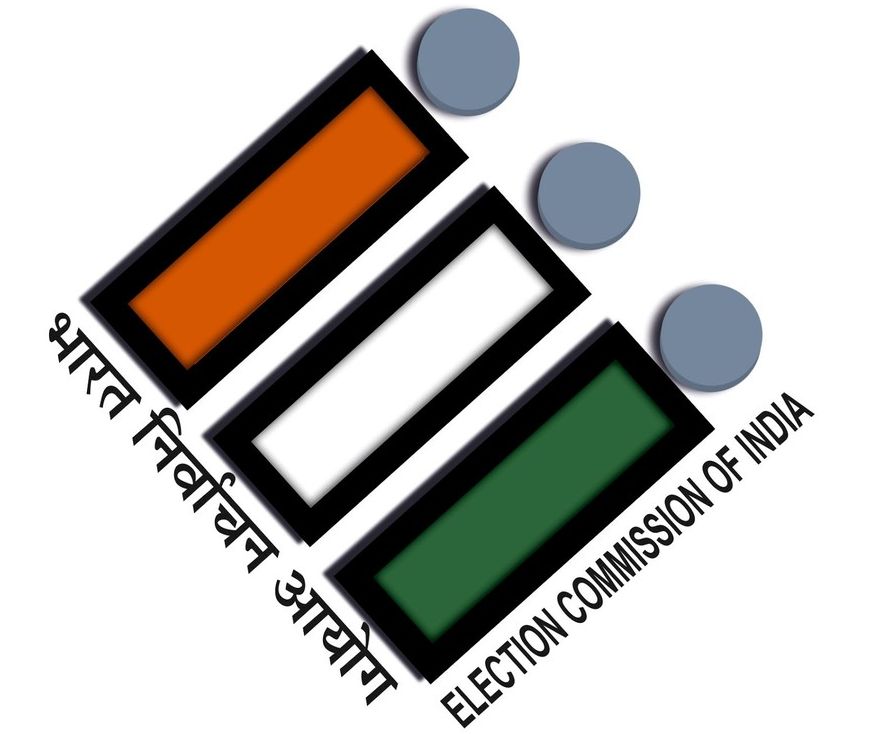Shimla: Blaming faulty EVM machines for the defeat in recently concluded state assembly election, the Himachal Pradesh Congress Committee has demanded use of ballot papers in the election process.
Congress submitted a memorandum to the Chief Election Commissioner through state Chief Electoral Officer and raised apprehension of danger over the democracy in India.
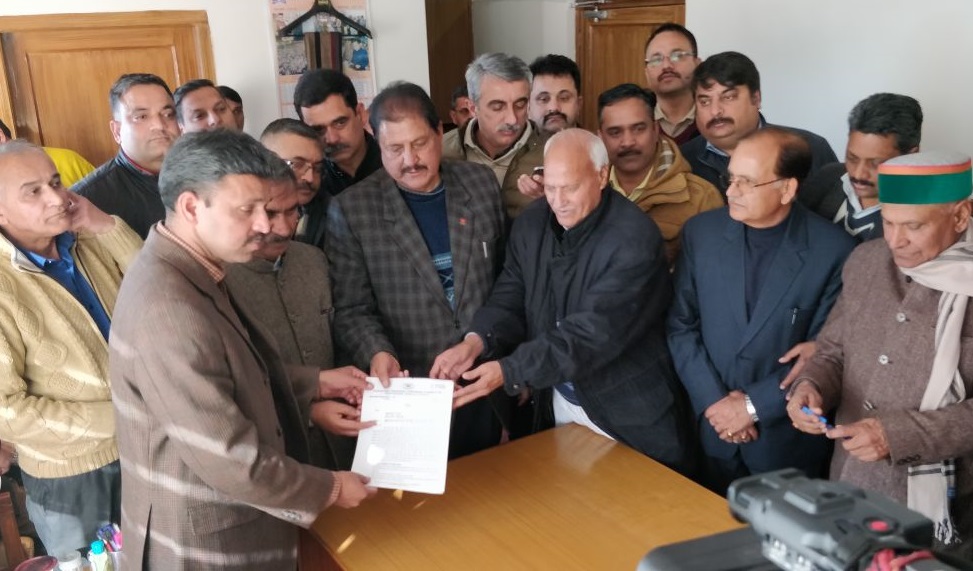
Raising doubts over the use of EVM in the election process, Himachal Congress President Sukhwinder Singh Sukhu said that complaints of tampering with EVMs are a serious issue and to keep the democracy alive in India and faith of common people in the democratic values election commission should return to ballot papers immediately.
Citing examples of countries like North America, the Netherlands, Ireland and Germany, Sukhu said that these countries had stopped EVM usage due to lack of transparency while France and England never used it.
Earlier in Dharmashala, former Chief Minister Virbhadra Singh had leveled similar allegations against the use of EVM in election process. Singh had blamed that the Congress lost power in the state to EVM only and asked election commission to return to the old and trusted ballot paper.
Similar apprehension were raised in many other states as well where losing party had blamed EVM for the loss. Most notable were in Uttar Pradesh where big political parties faced worst electoral defeat. Ruling Samajwadi Party and Congress alliance could win 54 seats and BSP won humiliating 19 seats. BJP emerged as a biggest party with 325 seats – notably saffron outfit had won meagre 47 seats in 2012 assembly election. SP, Congress and BSP had blamed EVM for their defeat, however, the Election Commission had vehemently rejected all allegations and claimed EVM safe and easy way of conducting election process. The ECI has unequivocally reiterate EVMs not temperable and integrity of electoral process is preserved.
Background of EVM
With a view to overcome certain problems associated with use of ballot papers and taking advantage of development of technology so that voters cast their votes correctly without any resultant ambiguity and removing the possibilities of invalid votes totally, the Commission in December, 1977 mooted the idea of EVM. The law was amended by the Parliament in December, 1988 and a new section 61A was inserted in the Representation of the People Act, 1951 empowering the Commission to use voting machines. The amended provision came into force w.e.f. 15th March, 1989.
Central Government appointed the Electoral Reforms Committee in January, 1990 consisting of representative of several recognized National and State Parties. The Electoral Reforms Committee further constituted a technical Expert Committee for the evaluation of the electronic voting machines. The Committee came to conclusion that the electronic voting machine is a secure system. The expert committee, therefore, unanimously recommended in April, 1990 the use of the electronic voting machines without further loss of time.
Introduced in 2000, EVMs have been used in 107 General Elections to State Legislative Assemblies and 3 General Elections to Lok Sabha held in 2004, 2009 & 2014.
Judicial Pronouncements on use of EVMs
The issue of possible tampering of EVM has been raised before Madras High Court-2001; Delhi High Court-2004; Karnataka High Court- 2004; Kerala High Court-2002 and Bombay High Court (Nagpur Bench)-2004, and all Courts have found EVMs credible, reliable and totally tamperproof. In some of these cases, even Supreme Court has dismissed appeals filed by some petitioners against High Court orders.
Some activists approached Supreme Court in 2009 which advised them to go to ECI. It was then these activists opened dialogue and ECI threw open challenge to anyone to demonstrate how machine owned by ECI can be tempered. However, in spite of opportunities given by ECI, machines opened and internal components shown, no one could demonstrate any tempering with the machine in ECI HQ. There proceedings were videographed.
Technical Security of EVMs used by ECI
The machine is electronically protected to prevent any tampering/manipulation. The programme (software) used in these machines is burnt into a One Time Programmable (OTP)/Masked chip so that it cannot be altered or tampered with. Further these machines are not networked either by wire or by wireless to any other machine or system. Therefore, there is no possibility of its data corruption.
The software of EVMs is developed in-house by a selected group of Engineers in BEL (Defense Ministry PSU) and ECIL (Atomic Energy Ministry’s PSU) independently from each other. A select software development group of 2-3 engineers designs the source code and this work is not sub-contracted.
After completion of software design, testing and evaluation of the software is carried out by an independent testing group as per the software requirements specifications (SRS). This ensures that the software has really been written as per the requirements laid down for its intended use only.
After successful completion of such evaluation, machine code of the source programme code is given to the micro controller manufacturer for writing in the micro controllers. From this machine code, the source code cannot be read. Source code is never handed over to anyone outside the software group of PSUs.
Micro controller manufacturer initially provides engineering samples to PSUs for evaluation. These samples are assembled into the EVM, evaluated and verified for functionality at great length. Bulk production clearance by PSU is given to micro controller manufacturer only after successful completion of this verification.
The source code for the EVM is stored under controlled conditions at all times. Checks and balances are in place to ensure that it is accessible to authorized personnel only.
During production in the factory, functional testing is done by production group as per the laid down Quality plan and performance test procedures.
The software is so designed that it allows a voter to cast the vote only once. The vote can be recorded by an elector from the ballot unit only after the Presiding Officer enables the ballot on the Control Unit. The machine does not receive any signal from outside at any time. The next vote can be recorded only after the Presiding Officer enables the ballot on the Control Unit. In between, the machine becomes dead to any signal from outside (except from the Control Unit).
Samples of EVMs from production batches are regularly checked for functionality by Quality Assurance Group, which is an independent unit within the PSUs.
Certain additional features were introduced in 2006 in ECI-EVMs such as dynamic coding between Ballot Unit (BU) and Control Unit (CU), installation of real time clock, installation of full display system and date and time stamping of every key-pressing in EVM.
Technical Evaluation Committee in 2006 has concluded that any tempering of CU by coded signals by wireless or outside or Bluetooth or WiFi is ruled out as CU does not have high frequency receiver and data decoder. CU accepts only specially encrypted and dynamically coded data from BU. Data from any outside source cannot be accepted by CU.
Uniqueness of ECI-EVMs make it safe for any Tempering
The Election Commission has also nullified the apprehension of political parties that some advanced countries had stopped using EVMs. The Commission clarified that any comparison between EVM used in India and other countries are not possible as ECI EVMs are Stand-alone Machine.
ECI claimed that most of the systems used in other countries are Computer based with internet connectivity. Hence, these could be vulnerable to hacking.
ECI stated that the software in the ECI-EVM chip is one time programmable (OTP) and burnt into the chip at the time of manufacture. Nothing can be written on the chip after manufacture. Thus the ECI-EVMs are fundamentally different from the voting machines and processes adopted in various foreign countries.
Any surmise based on foreign studies or operating system based EVMs used elsewhere would be completely erroneous. The ECI-EVMs cannot be compared with those EVMs.
Procedural and Administrative Securities
The Commission has put in place an elaborate administrative system of security measures and procedural checks-and-balances aimed at prevention of any possible misuse or procedural lapses. These safeguards are implemented by ECI transparently with the active and documented involvement of political parties, candidates and their representatives at every stage to build their confidence on efficacy and reliability of EVMs. These safeguards are:
Before every election, a first level checking (FLC) is done for every EVM to be used in the election by the engineers of the manufacturers in the presence of political parties’ representatives. Any malfunctioning EVM is kept separately and is not used in the election.
Manufacturers certify at the time of FLC that all components in the EVM are original. After this, the plastic cabinet of Control Unit of the EVM is sealed using a “Pink Paper Seal”, which is signed by representatives of political parties and stored in strong rooms. After this stage, the plastic cabinet of control unit of the EVMs cannot be opened. There is no access to any component of inside of EVMs.
Additionally, at the time of FLC, at least 1000 votes are cast by the representatives of political parties on 5%of EVMs randomly selected by them. A printout of the results of this mock poll as well as a sequential print out of every vote polled during the mock poll at the time of First Level Checking of EVMs are taken out for at least 5% of EVMs and shown to the representatives of political parties. Representatives of political parties are allowed to pick machines randomly for this purpose. In rest of the machines, numbers of votes polled during the mock poll are to the satisfaction of the representatives of political parties. Representatives of political parties are allowed to do mock poll themselves. It is all documented by DEOs/ROs.
Subsequently, stored EVMs are randomized by computer software twice once for allocation of machines to assembly constituencies and second to polling stations in the presence of candidates or their representatives before they are distributed for use in individual polling stations. Such lists of EVM containing serial number of EVM allocated to particular polling station are provided to the political parties/candidates.
Candidates and their representatives are allowed to conduct mock polls on EVMs at the time of candidate setting and also before the actual poll on the poll day to satisfy themselves about the satisfactory functioning of EVMs being used.
Once the candidate setting is done, the Ballot Unit of the EVM is also sealed with thread/Pink Paper seals so that nobody has access to the inside of the Ballot Unit too. These Pink seals also bear signatures of representatives of political parties/candidate.
A printout of the results of mock poll as well as a sequential print out of every vote polled during the mock poll at the time of Preparation of EVMs and candidate setting are also taken out for at least 5% of EVMs and shown to the representatives of political parties. Representatives of political parties are allowed to pick machines randomly for this purpose.
On the poll day, a mock poll by casting at least 50 votes is conducted at every polling station in the presence of the representatives of the candidates/polling agents with their signature and a mock-poll certificate to that effect is obtained from every Presiding Officer.
After the mock poll is over, another thread seal and green paper seals are put on the EVM to block access to all buttons on the EVM, except those, which are used for the conduct of poll. These paper seals and thread seals are allowed to be signed by the polling agents. After the poll is over, the Presiding officer presses the “Close” button on the EVM in the presence of polling agents. Thereafter, no votes can be polled in the EVM.
After this, the entire EVM is sealed. Candidates and their agents are allowed to put their signatures on the seals, which they can check for the intactness of the seal before counting. Candidates/ representatives travel behind vehicles carrying EVMs from polling stations to counting storage rooms.
In addition to this, the strong rooms where EVMs are stored, for counting are also sealed and watched round the clock. The candidates and their representatives are allowed to put their own seals on the strong rooms. They are also allowed to keep a watch round the clock on the strong room. Security forces are deployed in multiple layers around storage rooms.
The representatives of candidates of all political parties are given opportunity to participate in FLC, Preparation of EVMs before poll, mock poll, etc.
VOTER VERIFIABLE PAPER AUDIT TRAIL (VVPAT)
ECI based on consultation with political parties in 2010 considered to explore use of Voter Verifiable Paper Audit Trail (VVPAT) with a view to enhance transparency. Introduction of VVPAT implied that a paper slip is generated bearing name and symbol of the candidate along with recording of vote in Control Unit, so that in case of any dispute, paper slip could be counted to verify the result being shown on the EVM. Under VVPAT, a printer is attached to the balloting Unit and kept in the voting compartment. The paper slip remains visible on VVPAT for 07 seconds through a transparent window.
VVPAT were also used in Himachal Elections 2017. And no reports of any malfunctioning and wrong vote count were received from as many as 7,525 polling stations in the state.


